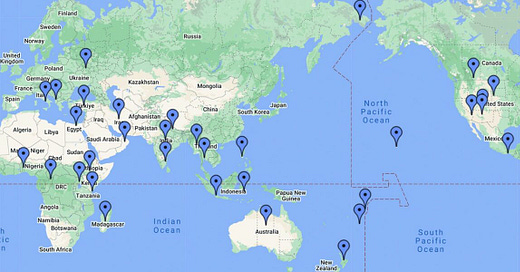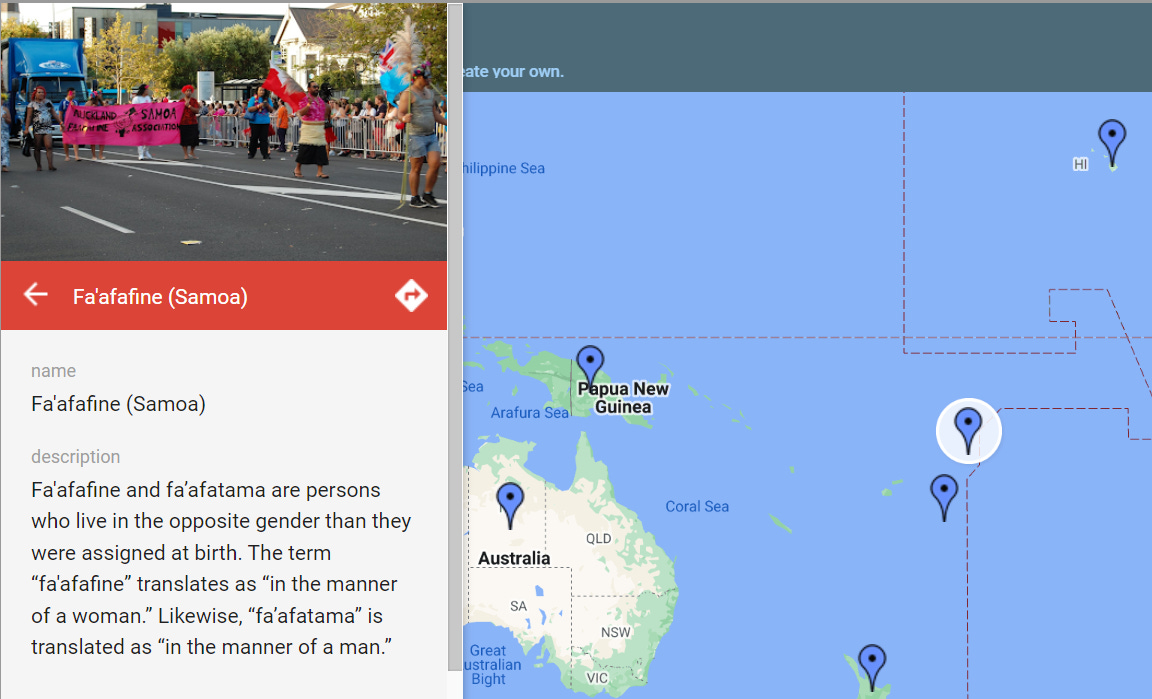Earlier in 2023, PBS Independent Lens invited me to become the new editor/consultant for the PBS Map of Gender Diverse Cultures, which, is, essentially, an accessible, brief introduction to 3rd genders and models of gender practiced outside of the colonial, postmodern world. Well…it’s live, now, and I’m incredibly proud and humbled by this work.
What is it? It’s a Google API-based map that allows one to read brief entries on specific exemplars of Indigenous and historic gender diversity, based on location. There are even some examples from Europe, which has its own rich, but highly suppressed, histories of gender diversity. In my introduction, I argue that our species is defined by its diversity, and that diversity includes the experience of gender diversity.
It’s exciting - and challenging - to live in a time where human gender diversity is blossoming, particularly as part of the re-vivification of cultures whose voices have been suppressed and survived the disruption and violence of the colonial era. It is exciting to lend my voice to those voices.
The pre-revision version of the PBS Map of Gender Diverse Cultures didn’t reflect the language, politics, and epistemologies of diverse indigenous cultures. Much of the language used to refer to Indigenous third gender persons whose lives are similar to transgender persons wasn’t particularly sensitive - in some places it was effectively transphobic. As many third gender indigenous people do not consider themselves to be transgender, as, within their culture, they have simply always occupied and performed a specifically named gender position, the narrative of transition is not their primary narrative, even if they, themselves take advantage of the kinds of medicalized, transgender care that are often considered the primary narrative for gender diverse persons within the United States.
In a lot of places, the former map conflated issues of gender and sexual orientation in inappropriate ways. The former version highlighted performances of religious cross-dressing that are not expressions of daily gender. It used idiosyncratic and outdated language that, as the person tasked with this update, was unpleasant to read.
While researching the state of this project, it was immediately apparent that a lot of K-12 and undergraduates were using this resource, sometimes as a sole source. Not only was it coming up high in Google searches, materials based on it certainly were, too. It also became apparent that low quality articles on gender were also using it as a sole source. This meant that everything from insensitive and transphobic or anti-Indigenous language to outright apocrypha was being cited and presented with authority.
It’s my hope that the new update of the PBS Map of Gender Diverse Cultures not only articulates some of the critical differences between Indigenous and non-Indigenous cultures on gender, some universals among diverse Indigenous cultures, and also reflects contemporary Indigenous gender politics. It’s my hope that the language of this updated document will slowly erode the poor language of its predecessor.
If you’re a teacher or other educator, and you need a guest speaker or reference on this map or related issues, I’m available, and eager to work with you. It is my opinion that colonial/Western models of gender are so dominant in our discussions that the knowledges of Indigenous persons - knowledges that in many cases have longer or more complex and developed histories than those of Western/colonial cultures - are often being drowned out in the shuffle. I’d like to do whatever work I can to put Indigenous and non-Indigenous knowledges of gender in conversation with one another. It’s work that must be done.
If you’re someone whose culture is directly addressed in this map, or isn’t addressed, I want to encourage you to reach out to me with your perspective, especially if you feel something isn’t correct or is unclear. This guide is intended to be introductory, and is not capable of being comprehensive, so please keep that in mind. There is no replacement for knowledge of our direct experiences and translating our epistemologies to the point of accessibility for non-Indigenous persons is always a challenge.
If you’re someone to whom this topic is wholly new, I hope we’ve done good work in making this topic accessible to you. Feel free to reach out with any questions, at any time.





